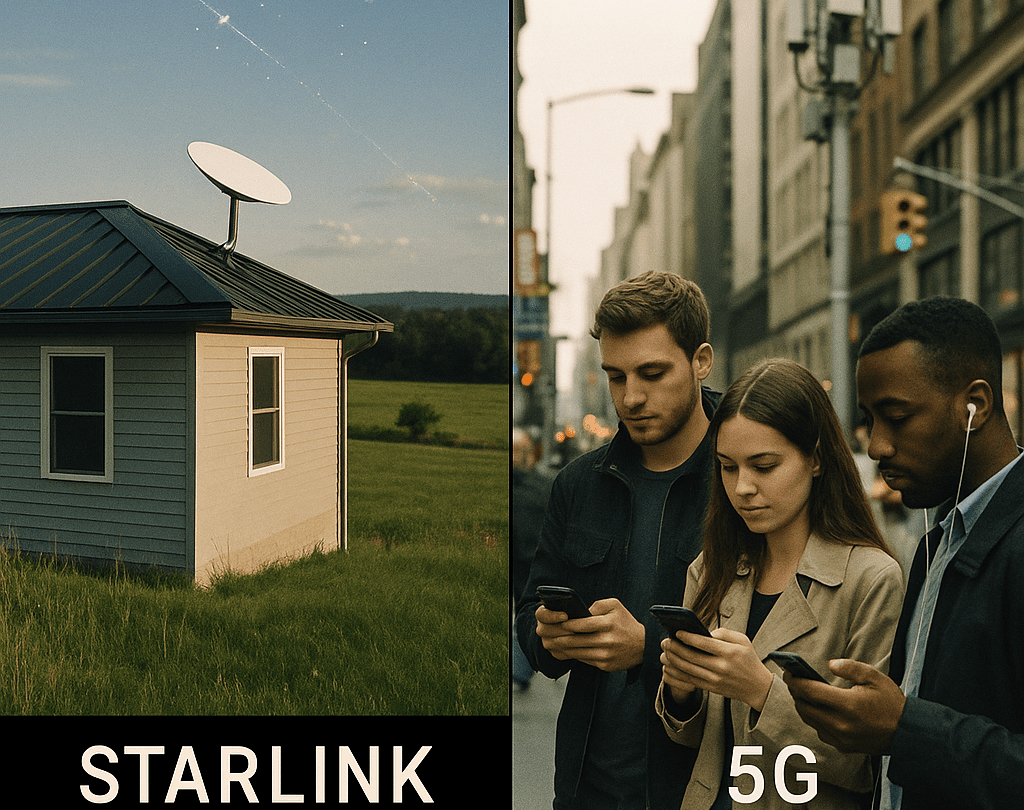The buzz surrounding Starlink, the satellite-based internet service developed by SpaceX, has grown noticeably in South Africa over recent weeks. Touted as a potentially revolutionary solution to connectivity challenges, it has been both praised and questioned. Now, as the South African government considers relaxing licensing requirements for satellite internet providers, including Starlink, the debate about its necessity and practicality has reached new heights.
A government gazette recently proposed easing Broad-Based Black Economic Empowerment (B-BBEE) licensing obligations for satellite service companies. This proposed policy shift has not gone unnoticed. It has triggered both political critique and public concern, largely centred on issues of economic equity and the potential sidelining of local telecoms infrastructure.
The fundamental question remains: Is Starlink truly a needed innovation in South Africa’s internet landscape, or is it a luxury disguised as a necessity?
Understanding the Technologies Behind the Hype
To answer this, one must understand how Starlink compares to its closest competitor in the cable-free internet space: 5G home internet.
Starlink operates through a network of low-Earth orbit (LEO) satellites that transmit signals directly to user terminals, bypassing the need for mobile towers or fibre-optic cables. This system is particularly beneficial in rural or isolated areas, where conventional internet options are limited or entirely absent.
On the other hand, 5G is the latest generation of cellular technology, using nearby mobile towers to beam high-speed internet to routers equipped with SIM cards. It is a scaled-up version of the same technology that powers modern smartphones.
5G performs exceptionally well in urban and suburban settings, thanks to the existing network infrastructure. But what does this mean in real-world usage?
Speed, Latency and Performance
In terms of speed, 5G clearly has the upper hand. Under optimal conditions, it can reach download speeds of up to 2 Gbps, with average latency hovering around 27 milliseconds — and potentially as low as 1 millisecond in ideal environments.
Starlink, by contrast, offers speeds between 50 to 250 Mbps, with latency averaging 37 milliseconds. While this is far better than traditional satellite internet, it does not compete with 5G’s capabilities in well-covered areas.
“5G offers higher peak speeds and lower latency, especially in urban settings.”
In a country where mobile infrastructure is rapidly expanding in cities but patchy in rural communities, this performance gap becomes critical in determining which technology is more suitable for which region.
Coverage and Rural Access
When it comes to nationwide coverage, particularly in isolated or underdeveloped regions, Starlink emerges as a strong contender. Because it only requires an unobstructed view of the sky to function, it opens up possibilities for connectivity in areas that have historically been neglected by telecom providers.
By contrast, 5G’s effectiveness is confined to areas with established cellular infrastructure. Despite accelerated rollout plans by major operators, many rural regions remain without adequate coverage.
“Starlink is the best choice for rural or off-grid users.”
This factor may explain some of the public and governmental interest in Starlink’s potential.
Scalability and Network Load
Another point of comparison is network capacity. 5G was built with high-density usage in mind. Its infrastructure can accommodate vast numbers of users with minimal impact on performance, even during peak times.
Starlink, however, relies on a growing but still limited number of orbiting satellites. As the subscriber base increases, users may begin to experience slower speeds and network congestion — unless SpaceX accelerates its satellite deployments to match demand.
“5G has higher scalability and an established cellular backbone.”
Security Concerns
From a security standpoint, 5G holds another advantage. The network employs integrated encryption and multiple layers of security protocols that offer robust protection against unauthorised access.
Starlink users, on the other hand, are responsible for implementing additional measures such as virtual private networks or proxy servers to ensure data privacy. The absence of deeply embedded security features may be a concern for some users, particularly businesses.
“5G, due to its built-in security infrastructure.”
Price and Affordability
Cost is often a decisive factor for many South African households. If approved for operation in the country, Starlink is expected to cost around R6,000 for initial installation, with monthly fees starting at R450.
5G packages, while varied, tend to be more affordable overall. Prices currently range from R399 to R949 per month, depending on the provider, data cap, and speed tier.
“Although still a bit pricy, 5G offers better speeds and there is a host of packages to choose from.”
This broad spectrum of pricing options gives 5G a competitive edge in terms of affordability and customisation.
Portability and Ease of Setup
Setting up Starlink involves mounting a fixed satellite dish with an uninterrupted view of the sky. While not overly complicated, it is a stationary setup.
5G routers, by contrast, are mobile and plug-and-play. As long as coverage exists, the device can be relocated and reconnected with minimal hassle.
“5G, due to its flexibility.”
This portability is appealing to renters, travellers, and anyone needing on-the-go internet without the need for permanent infrastructure.
So, Which One Is Right for You?
There is no one-size-fits-all answer. The ideal choice depends on your location, usage habits, and budget.
“If you live in a remote area with little or no mobile coverage, Starlink is your best bet. However, 5G is better if you are looking for reliable mobile signal that is faster, more affordable, and more secure.”
While Starlink promises a lifeline to those in forgotten corners of the country, 5G is currently better suited for South Africans living in cities and towns where cellular networks are robust and continually evolving.
With both technologies developing at pace, and with government policy playing a potentially pivotal role in access, the future of connectivity in South Africa could hinge not just on innovation — but on equitable, smart implementation.
Pros and Cons of Starlink vs 5G
| Category | Starlink (Satellite Internet) | 5G Home Internet |
|---|---|---|
| Speed | ✅ Good speeds (50–250 Mbps) in most areas. | ✅ Much faster in ideal conditions (up to 2 Gbps). |
| ❌ Slower than 5G in urban settings. | ❌ Speeds vary significantly based on coverage and congestion. | |
| Latency | ✅ Improved latency (average ~37ms). | ✅ Lower latency (average ~27ms, can go as low as 1ms). |
| ❌ Still higher latency than fibre or 5G. | ❌ May struggle in fringe coverage zones. | |
| Coverage | ✅ Works virtually anywhere with clear view of the sky. | ✅ Strong coverage in cities and suburbs. |
| ❌ Requires open sky; blocked by obstructions. | ❌ Poor or no coverage in rural/remote areas. | |
| Accessibility | ✅ Ideal for underserved and off-grid regions. | ✅ Widely available in urban centres. |
| ❌ Expensive upfront hardware and installation. | ❌ Coverage expansion still ongoing in rural zones. | |
| Scalability | ❌ Potential congestion as more users join a limited satellite network. | ✅ Designed for high-density use with existing mobile infrastructure. |
| Security | ❌ Requires user-implemented VPNs or proxies for added security. | ✅ Built-in encryption and carrier-grade security protocols. |
| Cost | ❌ High setup fee (~R6,000); subscriptions from R450/month. | ✅ Monthly packages start around R399; more affordable options exist. |
| ❌ No official availability in South Africa (pending regulation). | ✅ Legally available and supported by local providers. | |
| Installation | ❌ Needs dish mounted in clear, fixed position. | ✅ Plug-and-play routers; portable within coverage areas. |
| Portability | ❌ Not mobile; fixed to one location with optimal sky access. | ✅ Highly portable; can be moved between homes or offices. |
| Best Use Case | ✅ Remote farms, rural lodges, and wilderness areas with no cellular or fibre infrastructure. | ✅ Homes and offices in towns and cities with existing 4G/5G infrastructure. |

















